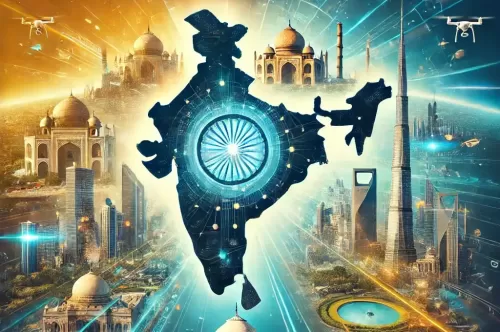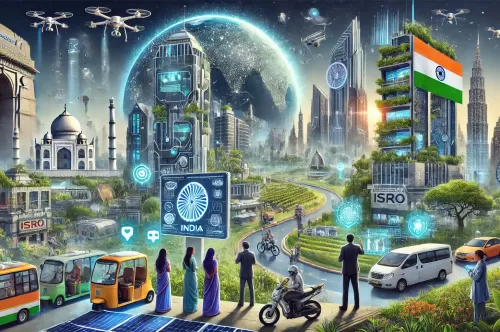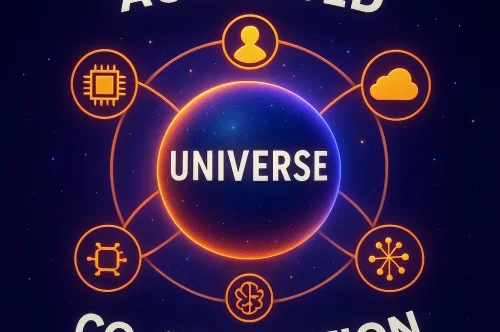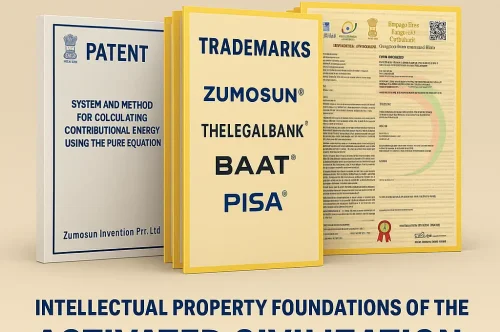India Global Superpower @ 2060 with $50 Trillion GDP: A Transformative Vision
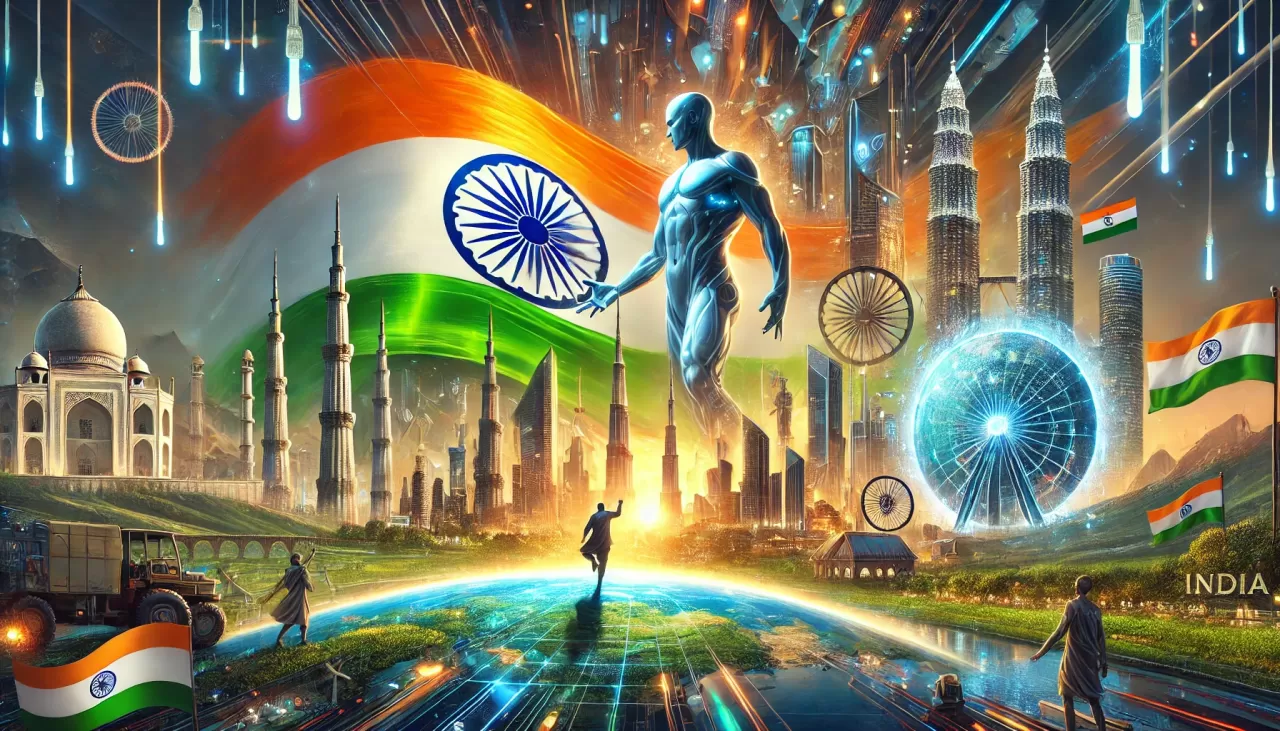
India Global Superpower @ 2060 with $50 Trillion GDP: A Transformative Vision
Envisioning India as a $50 trillion economy by 2060 is a bold and strategic aspiration, aligning with the idea of India emerging as a global superpower. This vision, set forth by Zumosun Founder Prakash Chand Sharma, focuses on leveraging India's demographic dividend, innovation capacity, and cultural strength while addressing key challenges. Achieving this ambitious milestone requires meticulous planning, strong leadership, and a unified effort across all sectors of society.
Key Pillars of the Vision
- Economic Transformation
- Objective: Position India as the world's largest and most inclusive economy.
- Targets:
- Maintain a sustained GDP growth rate of 7-9% annually.
- Enhance industrial output and services sectors while diversifying into new-age industries.
- Establish India as a global trade and investment hub.
- Key Industries:
- Technology: AI, robotics, quantum computing, and semiconductors.
- Renewable Energy: Solar, wind, and green hydrogen production.
- Manufacturing: Make India the global manufacturing leader.
- Services: Strengthen IT, financial services, and tourism sectors.
- Technological Leadership
- Objective: Lead the global tech revolution.
- Strategies:
- Invest heavily in R&D (target: 4-5% of GDP by 2040).
- Build AI-driven economies in sectors like healthcare, education, and agriculture.
- Expand India's space exploration programs to include Mars and beyond.
- Sustainable Development
- Objective: Build a net-zero, resource-efficient economy.
- Targets:
- Achieve net-zero carbon emissions by 2070, with significant milestones by 2050.
- Transform 80% of energy consumption to renewable sources.
- Lead global climate solutions, promoting carbon capture and circular economy models.
- Human Capital Development
- Objective: Create the world's most skilled and innovative workforce.
- Strategies:
- Universalize access to high-quality education and vocational training.
- Revolutionize rural education using AI and digital platforms.
- Foster a culture of innovation and entrepreneurship.
- Geopolitical and Strategic Dominance
- Objective: Establish India as a pivotal global leader.
- Strategies:
- Strengthen alliances (e.g., Quad, BRICS, G20) and lead initiatives in global governance.
- Mediate and lead in peace-building and climate negotiations.
- Expand India's military capabilities to maintain strategic autonomy and ensure regional stability.
- Cultural and Soft Power Expansion
- Objective: Amplify India's cultural influence.
- Strategies:
- Promote yoga, Ayurveda, and Indian cinema globally.
- Host global cultural and intellectual forums to spread India’s philosophy of "Vasudhaiva Kutumbakam" (The World is One Family).
- Position Indian universities among the world's top institutions.
Economic Breakdown for $50 Trillion GDP
| Sector | Projected Contribution (%) | Key Drivers |
|---|---|---|
| Technology & Digital | 25% | AI, IT, fintech, quantum computing. |
| Manufacturing | 20% | Electronics, automobiles, aerospace, and defense. |
| Services | 30% | Financial services, healthcare, education. |
| Agriculture | 10% | Smart farming, agro-tech, and food processing. |
| Renewable Energy | 15% | Solar, wind, and green hydrogen. |
Strategic Milestones
| Year | Milestone |
|---|---|
| 2030 | GDP reaches $10 trillion; India becomes top 3 economy. |
| 2040 | GDP surpasses $25 trillion; significant tech dominance. |
| 2050 | GDP exceeds $40 trillion; leadership in global governance. |
| 2060 | GDP reaches $50 trillion; established as a superpower. |
Challenges and Mitigation
| Challenge | Mitigation Strategy |
|---|---|
| Rapid Urbanization and Infrastructure | Build smart cities and invest in sustainable infrastructure. |
| Economic Inequality | Strengthen social safety nets and implement inclusive policies. |
| Climate Vulnerability | Scale renewable energy and adopt resilient agricultural practices. |
| Global Competition | Enhance innovation capacity and foster global alliances. |
Enablers of the Vision
- Demographic Dividend: Mobilize the largest workforce in the world with skill enhancement programs.
- Innovation Ecosystem: Foster a culture of creativity and risk-taking, with startups leading innovation.
- Institutional Reforms: Ensure transparency, governance efficiency, and strong legal frameworks.
- Global Partnerships: Collaborate with international allies for technology transfer and investments.
Conclusion
India Global Superpower @ 2060 with a $50 trillion GDP is an achievable vision that requires transformational changes in economic, technological, social, and geopolitical dimensions. By capitalizing on its inherent strengths and addressing systemic challenges, India can rise to global prominence, driving inclusive growth and contributing to a balanced, prosperous world. This vision, underpinned by a cohesive strategy, offers a blueprint for long-term success and global leadership.
About The Author:-
Prakash Chand Sharma, a multi-talented leader, defies labels. He's a pioneer of "The Doctorate of Growth & Success" and the Work Engine Network. Sharma seamlessly blends expertise in engineering, law, finance, and business.
His academic background (visiting professor) combined with engineering, legal practice, and tax consultancy experience showcases his intellectual depth. Over a decade of entrepreneurship across various sectors, coupled with leadership positions in multiple companies, has honed his strategic vision.
This unique blend positions Sharma as a transformative leader and a sought-after mentor. His visionary leadership has driven the success of the Zumosun Group, a diversified conglomerate. His dedication to growth extends beyond business with his innovative "The Do.GS" concept.
Follow On:-
1. https://www.linkedin.com/in/eng-adv-ca-m-prakash-chand-sharma-26586143/
2. https://www.facebook.com/er.adv.ca.prakash.chandsharma.35

